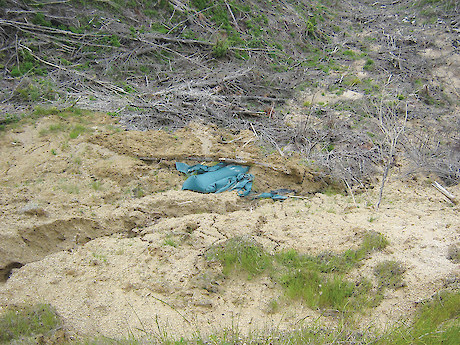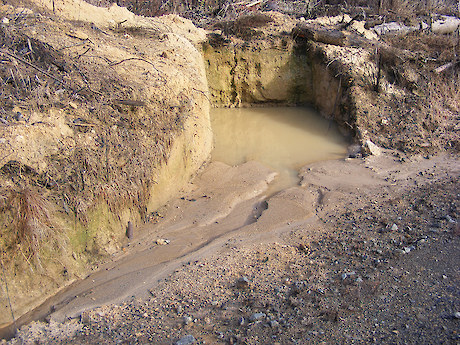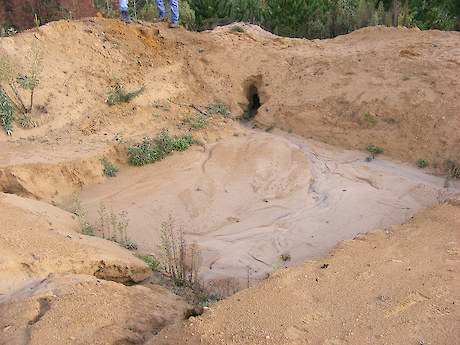Erosion and sediment control structure maintenance covers ditches, cut-outs, berms, drainage culverts, flumes, silt traps and soak holes, silt fences and sediment ponds. Erosion and sediment control structures need regular maintenance. Prepare a routine maintenance plan which includes heavy rainfall response measures. Check these as part of any heavy rain or post-storm road maintenance assessment.
The most challenging time for maintenance is often after new construction and the first heavy rain, and before vegetative cover establishes. Ensure erosion and sediment control maintenance is planned and meets their intended purposes. For example, ensure there are enough road drainage culverts and cut-outs to control stormwater runoff. If not, either construct additional ones, build rock armour, check dams, or apply polymers in areas that ditch to highly sensitive receiving areas.
9.9.1 Ditches
Maintain ditches. They can require regular maintenance due to cut bank slumping, which can disrupt their drainage pathway. Ditch damage is the primary reason for blocked culverts, as these can get blocked with sediment and debris. Where ditches have ongoing siltation issues, the best solution may be to address the problem at its source. If this cannot be resolved, then other erosion control methods may be useful, including armouring the ditch or putting in check dams. Associated structure, such as grassing or hydroseeding, or establishing sediment traps close to the source, may be needed to reduce sedimentation. Some vegetation like grass, but not dense, in the ditch may be useful for reducing water speed and scouring.
Ditches can be cleared by front-end loader, excavator, grader or by hand. The choice is likely to depend on the condition of the ditch, and the amount of maintenance work, its type and depth. The use of excavators will prevent fine material being spread on the roadway, which can create a road surface problem. This is a problem when a grader is used in these materials.
Care must be taken not to cut too much material from the ditch bank’s toe and bed; this can cause additional ongoing bank collapse or erosion.
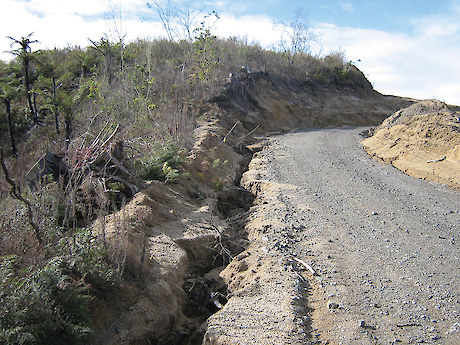
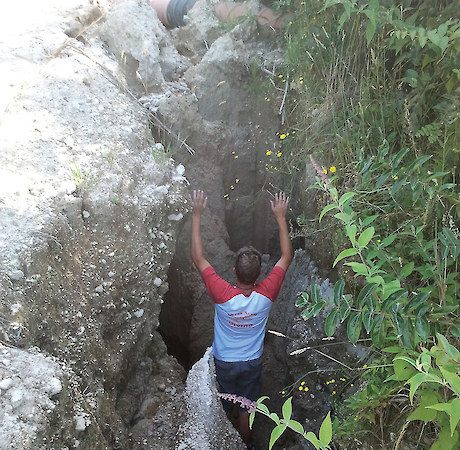
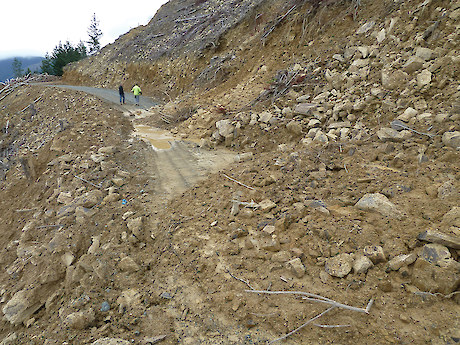
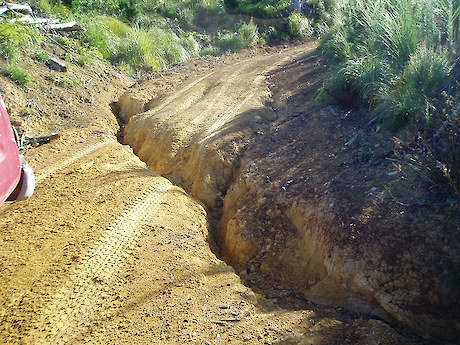
9.9.2 Cut-outs and berms
 Berm cut-outs can be vulnerable to storm damage because they are compacted fill. Consider armouring, especially when they link to other structures over a fill face, like a culvert socBerms control water flow along the outer edge of the road to cut-outs, which direct it off. It is essential that berms maintain this function. Maintenance should focus on removal of debris that blocks or diverts water, so that water can freely flow along them. Cut-out maintenance can be done with an excavator, or if the road allows, with the grader as part of a grading programme. If there has been berm edge collapse, or if machinery has been driven/sited on the berm, then the structure needs to be shored up as soon as practicable. There is a temptation when doing roading maintenance to dump spoil, such as road bank slump material, on top of an existing berm. This can overload the berm’s outside edge and cause fill failure. Where practicable, avoid spraying vegetation on the berm when pre-plant desiccation spraying.
Berm cut-outs can be vulnerable to storm damage because they are compacted fill. Consider armouring, especially when they link to other structures over a fill face, like a culvert socBerms control water flow along the outer edge of the road to cut-outs, which direct it off. It is essential that berms maintain this function. Maintenance should focus on removal of debris that blocks or diverts water, so that water can freely flow along them. Cut-out maintenance can be done with an excavator, or if the road allows, with the grader as part of a grading programme. If there has been berm edge collapse, or if machinery has been driven/sited on the berm, then the structure needs to be shored up as soon as practicable. There is a temptation when doing roading maintenance to dump spoil, such as road bank slump material, on top of an existing berm. This can overload the berm’s outside edge and cause fill failure. Where practicable, avoid spraying vegetation on the berm when pre-plant desiccation spraying.
Regular inspection of the berms should be done to identify any areas which may have been damaged by vehicles.
9.9.3 Drainage culverts
Cleaning out drainage culverts is a core maintenance task. This includes keeping culverts clean and free of debris, and repairing any damaged or broken culvert entrances or outlets. On new construction, inlets can easily block. It is essential that culvert spacing is sufficient to adequately drain the stormwater runoff. If not, install additional drainage culverts.
If the drainage culverts are installed correctly, then maintenance can easily be done by an excavator. If the entrance is too tight for an excavator bucket, then they will need to be cleared by hand. Blocked drainage culverts require water blasting out. A good way of doing this is using a forest fire appliance and spraying from the outlet back.
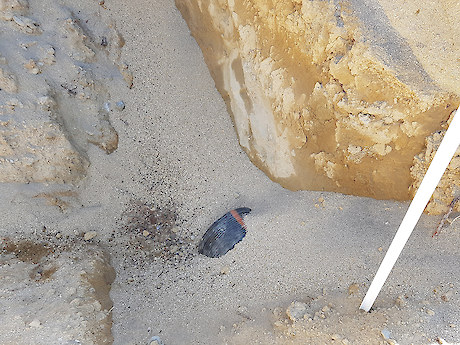
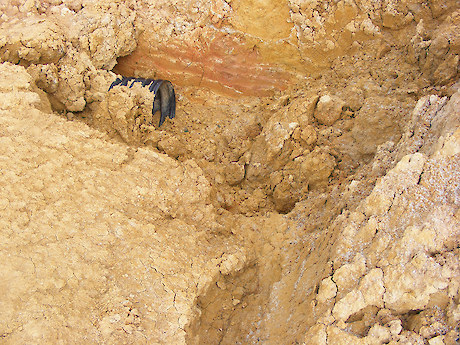
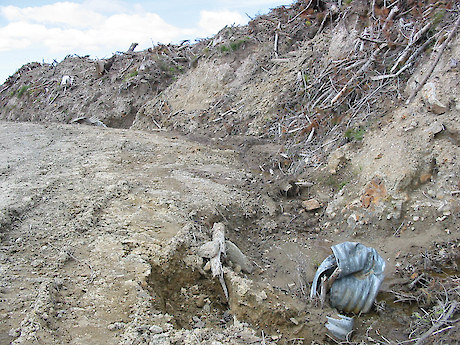

9.9.4 Flumes
Flumes should be kept clear of debris to allow the water to flow freely. Any broken or worn sections of a flume should be replaced. The flume should be kept as watertight as possible to prevent batter slope erosion. Flume pegs should also be inspected, and any damaged ones replaced.
Flumes need regular maintenance, especially on a new construction. Check flumes for functionality after a heavy rain event, and ensure that they have enough capacity to control stormwater runoff. If not, add additional controls as part of maintenance.
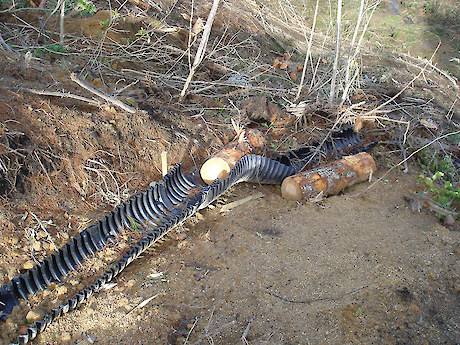
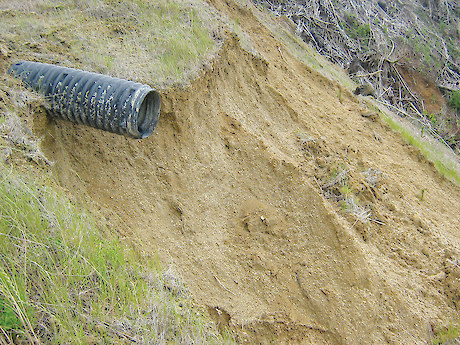
9.9.5 Sediment traps, soak holes, sediment fences and retention ponds
Sediment traps and soak holes need regular maintenance, especially with new construction and after a heavy rain event, as water can transport significant amounts of sediment and fill them in. To maintain their effectiveness, they need to be cleaned out. Check that the spacing of sediment traps and soak holes is enough to manage the stormwater runoff. It may be useful to monitor the quantity of material removed to identify problem areas. Place the sediment where it cannot wash back into the structure or create another sediment issue. Where culverts are present, take care not to damage the drainage culvert inlet or outlet when cleaning them out. Dig the fines out of soak holes, as they may lose their effectiveness if fine material seals the floor of the soak hole, and inhibits drainage.
Silt fences need regular maintenance because they can fill rapidly on very erodible soil sites. Check silt fences regularly, and after any moderate rainfall, especially on new construction sites. Another important aspect is to check that the silt fence is working correctly, and is sized to the site. If not, enlarge if possible, or redirect some of the flow to another stormwater control measure. When cleaning the fence, remove sediment to a safe location where it cannot wash back into the fence, enter a sensitive area or be subject to further erosion.
Check sediment ponds for structural integrity and capacity as part of any heavy rain or post-storm event road maintenance assessment. They need regular maintenance, especially on new construction. Also check that the structure is appropriately sized with a sufficient safety factor to control the stormwater runoff. Alternatively, re-direct some of the flow to another stormwater control measure.
Cleaning is usually done by an excavator or backhoe for these structures.
